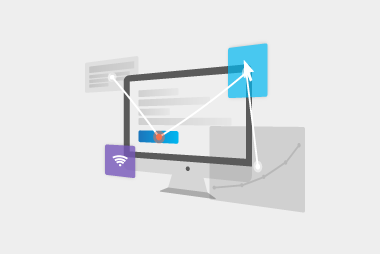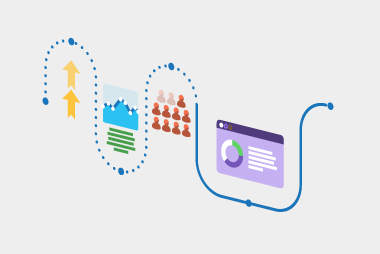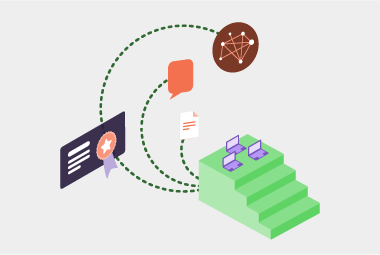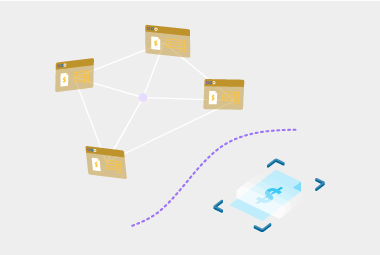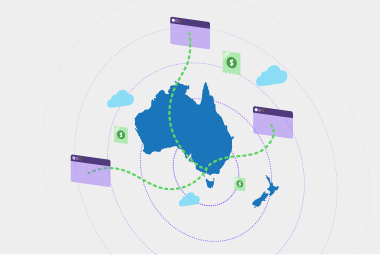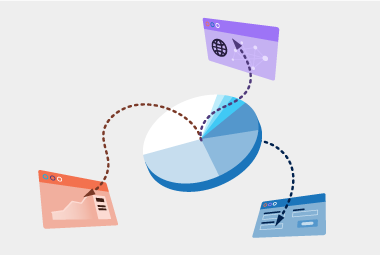eInvoicing is gaining popularity as more organisations look to benefits from its efficiencies. einvoicing enables organisations to send and receive invoices electronically, directly to and from their software. It removes the need for unnecessary data entry and inaccurate OCR scanning.
To get the most out of eInvoicing, one of the most important things is successfully onboarding your customers and/or suppliers.
Why is onboarding so important?
It maximises your ROI
Every invoice you can process through eInvoicing increases your ROI. Generally, your setup cost is fixed, so get the most out of it through onboarding as many customers or suppliers as possible. Having all of your partners trading through the same method also reduces your costs because you don’t have to maintain several processes.
You use one process with all your suppliers
Businesses that don’t onboard all their partners have different processes for each. This makes invoicing for your teams more complicated and time consuming. If you still receive email and PDF invoices your accounts payable team still need to manually input the figures into your system.
The process of onboarding
There are a few steps in the process of onboarding partners to eInvoicing. It’s important to prepare for each one.
Segmenting
This stage assesses the ability of your partners to implement eInvoicing. Segment your partners into different levels of capability such as:
- Those already using eInvoicing
They’re ready to start sending you eInvoices and you send them eInvoices.
- Those with the capability to start using eInvoicing
Mainly those with ERP or accounting software and just need to enable eInvoicing.
- Those currently not using software and physically receiving and sending invoices
They could be using paper or sending documents via email.
These segments will require tailored communications and onboarding methods.
Communications
When onboarding your partners, it’s important to have a plan for communicating your transition to eInvoicing. This provides clarity and direction for the project.
First things first, let your partners know you’re transitioning to eInvoicing. Communicating any type of change internally or externally is always daunting, but it’s important. At some stage, you may want to include requirements and message implementation guide (MIG) documents if you have them. MIGs are guides that detail what data in what format will be required to be exchanged.
When onboarding your partners, it’s important to have a plan for communicating with them. It’s more than just announcing that you’re moving to eInvoicing. The main things you want to do when communicating with them is:
- Bring them along on the journey
You may want to communicate with your suppliers giving them updates on the progress of your onboarding.
- Get their buy in
Talk about why you’re transitioning to eInvoicing but also mention the benefits for your partners to use eInvoicing.
- Give them the info they need and make it as easy as possible
At some stage, you may want to include requirements and message implementation guide (MIG) documents if you have them. MIGs are guides that detail what data in what format will be required to be exchanged.
If you’re interested in learning more about the process and best plan for onboarding, read our whitepaper,
A guide to successfully onboarding trading partners to eInvoicing.
Certification and testing
The Peppol eInvoicing framework has certain fields that can be used within eInvoices. If you require certain fields on your invoices outside of these you’ll need to test your partners messages to ensure they include these fields. Once you’ve decided on these additional fields make sure to document it in a MIG or elsewhere.
You will then need to ensure the eInvoices that your suppliers will send to you include these fields and are Peppol-compliant. MessageXchange provides customers with message compliance testing (MCT) service that is customised to each business’ needs. Your supplier will upload their Peppol eInvoice file to a portal, which will check its syntax, business rules and more against your requirements. It’s a simple interface for suppliers to test their messages and ensure it meets your requirements before they start to send you production-ready invoices. It also saves you from manually testing with your suppliers, which can require constant back and forth.
Managing a hybrid process while you onboard
It’s normal and expected that businesses maintain multiple invoicing processes while they’re onboarding suppliers. After all, not every business is in the same level of readiness when it comes to eInvoicing. Some may be more advanced than others. Some may be reluctant to change. For this reason, you’ll need to have different processes for different businesses. Initially you will need to continue operating in the same way with some businesses as you transition others to eInvoicing.
Tips for success
There are a few things to keep in mind to make the process go smoother.
Stage your onboarding process
It might be a good idea to start with the partners you know are ready and get them onboarded first. Then you can focus on other partners that might be less capable. Start with a small number at a time to make it more manageable, and to give you an opportunity to learn what to do, or not to do.
Remind partners of the benefits for them
It’s one thing to communicate your reasons for jumping on eInvoicing but it’s a good idea to make it clear how it’ll benefit your partners too. Reinforce these benefits in your communications throughout each stage. This will help them transition and comply with your process.
Give them options for compliance
We touched on your partners’ ability earlier on. It can be helpful to suggest options for compliance. You might think suggest a web portal to issue eInvoices for those who use their existing invoicing software. This can make it cheaper and easier for them to comply.
We provide a free portal,
Colladium, for these types of businesses to issue and receive eInvoices.
Seek help
If you’re stuck at any point in the process or need help always look for help. Your eInvoicing Access Point, or provider, can be a good starting point. They’ve likely seen the issue before, or know someone who has.
If you’re interested in implementing eInvoicing for your business, request a call back below.
Request a call
Chat with one of our experts
Just fill out your details below and we'll be in touch within one business day.
